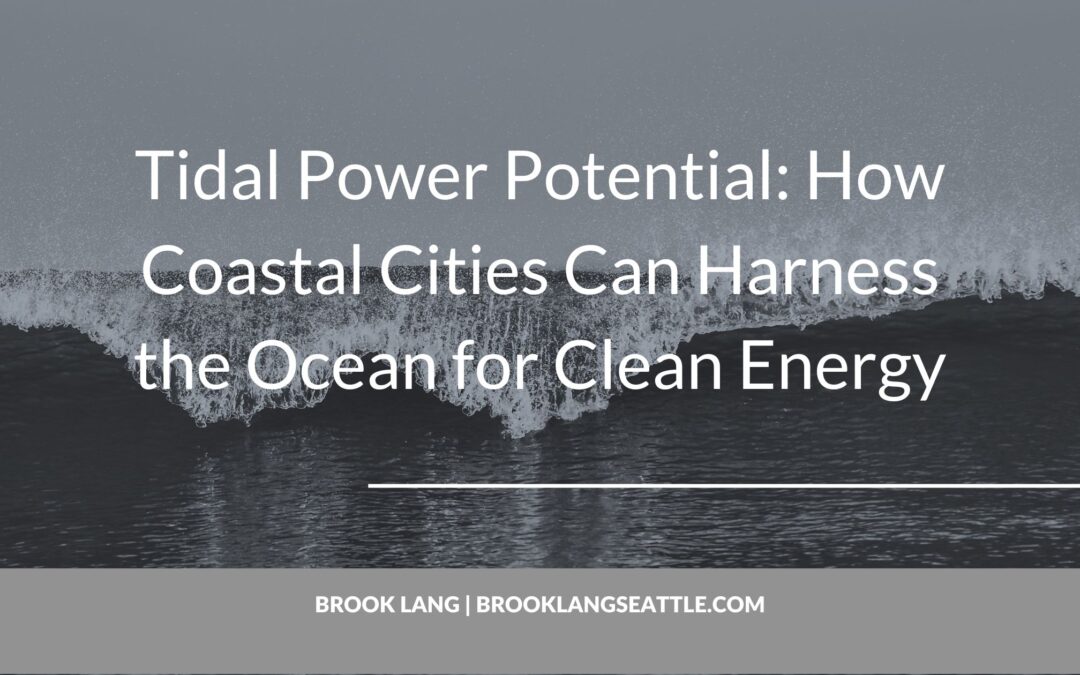Across the globe, oceans represent one of the most powerful yet underutilized sources of renewable energy. Tides, driven by the gravitational pull of the moon and the sun, provide predictable and consistent movement of water that can be transformed into electricity. For coastal cities facing rising energy demands and the urgent need to reduce carbon emissions, tidal power offers a sustainable solution with enormous potential.
How Tidal Power Works
Tidal power generation uses the natural rise and fall of ocean tides to produce electricity. There are two primary methods: tidal stream systems and tidal barrages.
-
Tidal stream systems function like underwater wind turbines, capturing the kinetic energy of moving water in tidal currents. These systems are scalable and can be installed in areas with strong tidal flows.
-
Tidal barrages act like dams built across estuaries, using sluice gates and turbines to harness energy from water movement during high and low tides.
Because tides are predictable years in advance, tidal energy offers a level of reliability unmatched by other renewable sources like solar and wind, which depend on weather conditions.
Benefits for Coastal Cities
The advantages of tidal power extend far beyond clean energy generation. Coastal cities can benefit in several ways:
-
Energy independence: By harnessing local tidal resources, cities can reduce reliance on imported fossil fuels.
-
Resilience: Tidal power provides steady, predictable electricity, strengthening energy security against grid disruptions.
-
Economic growth: Investing in tidal infrastructure creates jobs in engineering, construction, and maintenance, boosting local economies.
-
Environmental impact: Unlike fossil fuels, tidal energy produces no greenhouse gases during operation and has a relatively small ecological footprint when properly managed.
For cities already grappling with climate change, tidal energy represents a dual benefit—reducing emissions while turning rising seas into a source of opportunity.
Real-World Applications
Several countries have already made progress in harnessing tidal energy. The United Kingdom’s MeyGen project in Scotland is the world’s largest tidal stream array, generating clean power for thousands of homes. South Korea’s Sihwa Lake Tidal Power Station, the largest tidal barrage facility, provides renewable energy on a massive scale. Pilot projects in Canada, France, and China are further proving the viability of tidal technologies.
These early successes highlight how coastal cities can adapt tidal energy solutions to their unique geographies and energy needs.
Challenges to Overcome
Despite its promise, tidal power faces barriers. High upfront costs for infrastructure, potential impacts on marine ecosystems, and regulatory hurdles can slow development. However, as technology advances and investment grows, these challenges are becoming more manageable. Floating and modular turbine systems, for example, are reducing installation costs while minimizing environmental disruption.
Looking Ahead
Tidal power is still in its early stages compared to solar and wind, but its potential is undeniable. For coastal cities, embracing tidal energy is not only about diversifying renewable portfolios—it is about redefining the relationship between urban life and the ocean. By tapping into the rhythm of the tides, cities can build cleaner, more resilient futures powered by the very waters that surround them.
